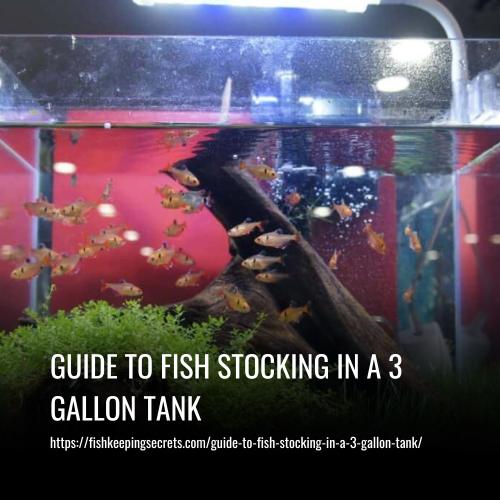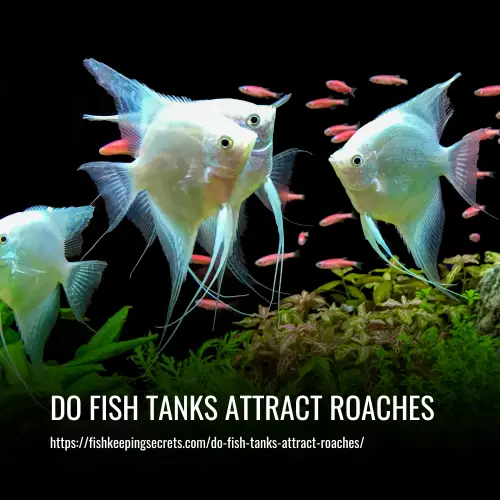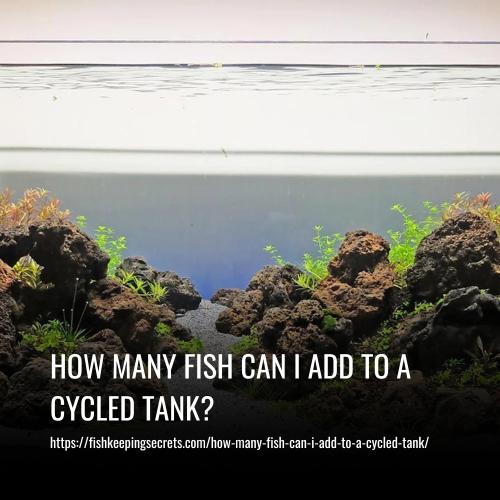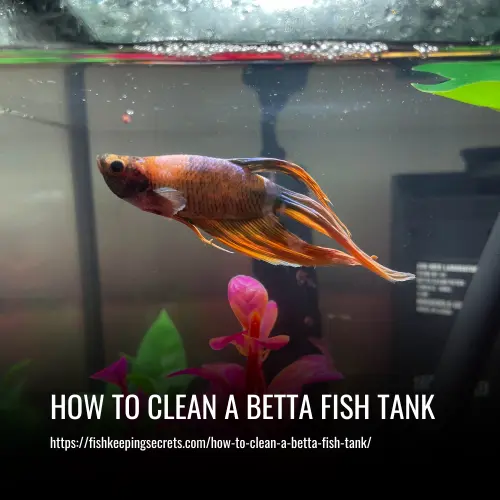Only one fish can safely live in a 3 gallon tank. A 3 gallon tank might seem like a great option for a small decorative fish, but it’s important to remember that fish need adequate space to swim and thrive.
Overcrowding a tank can lead to poor water quality, stress, and health problems for the fish. In a 3 gallon tank, the only safe option is to keep just one fish. It’s important to research the specific requirements of the species of fish you plan to keep and provide them with a suitable environment.
While it may be tempting to add more fish to the tank, it’s better to err on the side of caution and provide a comfortable and healthy living space for your aquatic pet.

Choosing The Right Fish
When it comes to selecting a fish for your 3 gallon tank, there are a few key factors to consider. First and foremost, you’ll want to choose a fish that is small in size and does not require a large swimming space.
Some suitable options for a 3 gallon tank include:
How Many Fish Can Be In A 3 Gallon Tank: Choosing The Right Fish
Selecting the right fish for a 3-gallon tank can be a daunting task, especially for beginners. While a 3-gallon tank may seem small, it is still possible to keep a few fish in it if you choose the right breed.
This guide will explore the factors to consider when selecting fish for your 3-gallon tank and popular breeds that are suitable for this tank size.
Factors To Consider When Selecting Fish
Before choosing the fish for your 3-gallon tank, there are several factors to consider:
- Tank size: The size of the tank will determine how many fish you can keep. A 3-gallon tank can only support a few small fish.
- Compatibility: Certain fish species may not get along with each other. It is crucial to choose fish that are compatible with each other to prevent aggression and stress.
- Water parameters: Some fish species require specific water conditions that may be difficult to maintain in a small tank. It is essential to research the water parameters required by the fish before making a purchase.
Popular Breeds Of Fish That Are Suitable For A 3-Gallon Tank
Here are some popular breeds of fish that are suitable for a 3-gallon tank:
- Betta fish: Also known as siamese fighting fish, bettas are a popular choice for small tanks. They are known for their striking colors and can thrive in a 3-gallon tank.
- Guppies: Guppies are small, colorful fish that are easy to care for and breed quickly. They make a great addition to a 3-gallon tank, but be sure to keep only one male to avoid aggression.
- Neon tetras: Neon tetras are small, peaceful fish that can add a pop of color to your 3-gallon tank. They are easy to care for and can be kept in a school of two to three fish.
- Shrimp: A 3-gallon tank can be an ideal habitat for freshwater shrimp like cherry shrimp or ghost shrimp. They are low-maintenance and will help keep the tank clean by eating algae and leftover food.
- Snails: Another great addition to a 3-gallon tank are snails like nerite or mystery snails. They will also help keep the tank clean and can add some interest to the tank with their unique shell patterns.
Remember, overcrowding a 3-gallon tank can lead to poor water quality and stress for the fish. The general rule is to keep no more than one inch of fish per gallon of water. When choosing fish for your 3-gallon tank, make sure to research the breed’s habits and needs to provide the best possible environment for your aquatic pets.
Preparing Stocking a 3-gallon Tank
Before adding fish to your 3-gallon tank, it’s important to properly prepare the tank. Here are some steps to follow:
1. Tank Size And Location Considerations:
When choosing a 3-gallon tank for your fish, be wary of overcrowding. The number of fish you can accommodate is dependent on the size of your tank, and a 3-gallon tank is on the smaller side. Consider the following points:
- Choose smaller fish that can thrive in a small environment
- Limit the number of fish to one or two at most
- Ensure sufficient space for your fish to swim
- Place the tank in a location with consistent room temperature, avoiding direct sunlight to prevent overheating
2. Decor And Substrate Selection:
When preparing the tank, it’s important to choose appropriate decor and substrate. Here are some factors to consider:
- Choose natural substrates such as sand or gravel, avoiding sharp or small pieces that could harm your fish
- Provide hiding spaces and plant life for your fish to feel comfortable and secure
- Avoid overcrowding in the tank with too many decorative pieces
3. Proper Filtration And Aeration:
Maintaining proper filtration and aeration is crucial for maintaining a healthy environment for your fish. Here are some tips:
- Use a filter that can adequately accommodate the size of your tank
- Clean your filter regularly according to manufacturer recommendations
- Provide sufficient aeration in the tank by using a bubbler or air stone to oxygenate the water
4. Proper Temperature And Lighting:
Maintaining the correct temperature and lighting is imperative to your fish’s well-being. Here are some notes to consider:
- Use a thermometer to check that the water temperature remains within the optimal range for your fish
- Provide the right lighting conditions based on the species of fish you have. Some fish require lower light levels, while others require brighter lights to thrive.
5. Water Testing And Maintenance:
Regular maintenance and water testing is essential to ensure your fish stay healthy. Here are some pointers:
- Test water parameters regularly using a water testing kit
- Perform water changes frequently to maintain water quality
- Ensure that adjustment of water should be gradual to avoid distressing your fish
By following these tips, you can ensure that your fish live in a safe and healthy environment, even in a smaller tank like a 3-gallon. Remember to keep their comfort in mind and maintain proper care and attention for their continued well-being.
Fish Stocking Techniques In A 3-Gallon Tank
Choosing the appropriate number of fish for a 3-gallon tank requires careful consideration of various factors such as the species, their temperament and size, filtration capacity, and the aquarium’s overall maintenance schedule. Overcrowding can lead to stagnant water, a spike in ammonia levels, and the spread of diseases and infections.
Fortunately, there are several techniques to ensure the proper stocking of fish in a 3-gallon tank.
Acclimatization Process
Before adding fish to your tank, it’s essential to acclimate them to their new environment gradually. Abrupt changes in temperature or water chemistry can stress the fish and affect their health. Follow these steps to acclimate your fish correctly:
- Float the fish, still inside their bag, in the tank for at least 20 minutes to allow the temperature to equalize.
- Add small amounts of tank water to the bag every 10 minutes to adjust the fish to the tank’s water chemistry.
- After an hour, release the fish into the tank by dumping the bag’s contents carefully.
Tank Cycling And The Nitrogen Cycle
For the uninformed, tank cycling can seem a daunting task, but it’s crucial to establish a healthy and stable aquarium. Cycling refers to the process where beneficial bacteria grow in the tank, converting ammonia into nitrite, and nitrate, which is safer for the fish.
Here are some standard practices for a well-cycled tank:
- The nitrogen cycle typically takes between four to six weeks.
- Test the water regularly and conduct partial water changes of up to 30% to reduce nitrate levels.
- Avoid over-cleaning the aquarium to preserve the beneficial bacteria.
Proper Feeding And Diet
Feeding your fish a nutritious and well-balanced diet is crucial for their growth and health. Overfeeding or giving the wrong kind of food can lead to health problems and tank pollution. Here are some feeding tips for a 3-gallon tank:
- Give your fish a few small feedings throughout the day.
- Choose high-quality fish food that has the correct balance of protein, vitamins, and minerals.
- Avoid over-feeding your fish – they should eat all the food in a few minutes.
Preventative Measures Against Diseases And Infections
No one wants their fish to fall sick. Preventative measures will save time and expense. These measures include:
- Regularly cleaning the tank and the equipment inside.
- Avoid exposing fish to abrupt changes in temperature and water parameters.
- Research the specific species of fish you have to better understand their needs.
Caring for a 3-gallon tank requires attention to detail. By following these fish stocking techniques, you can ensure a healthy, thriving aquarium for your pets.
Tips For Maintaining A Healthy Environment
Maintaining a healthy environment for your aquatic pets should be your top priority. Without proper care, your fish may struggle to survive and could suffer from numerous health issues. Here are some essential tips for creating a healthy environment in your 3-gallon tank:
Regular Water Changes
Regular water changes are essential because they help to maintain the quality of the water in your tank. Water changes remove debris and toxins that accumulate, maintaining the water’s chemical balance. Here are some key points to remember:
- 20-30% of water should be changed weekly
- Use a water conditioner to remove chlorine and chloramine
- Use a gravel vacuum to remove debris and uneaten food
- Replace filter media once a month
- Avoid replacing all of the water at once
Proper Tank Cleaning Techniques
Keeping your tank clean is critical to avoid the buildup of harmful bacteria that can affect the fish’s health. Here are some tips for proper tank cleaning:
- Clean the interior of the tank with a sponge or scraper that is aquarium-safe
- Do not use soap or detergent when cleaning the tank
- Clean the decorations, substrate, and filter
- Rinse everything thoroughly with fresh water
Monitoring And Adjusting Water Conditions
The chemistry of the water in your tank is crucial for the health of your fish. You need to keep an eye on its ph, ammonia, nitrite, and nitrate levels. Here are some key points to remember:
- Test the water weekly using a reliable water testing kit
- Regulate the ph level between 6.5 and 7.5
- Maintain ammonia levels below 0.25 ppm
- Nitrite levels should be at 0 ppm, while nitrate levels should be around 20-40 ppm
- Use additives like fish-friendly bacteria if necessary
Steps To Take In Case Of Overstocking Or Aggression Issues
Overstocking your tank can lead to a buildup of toxins and waste that can harm your fish. Similarly, aggression problems between fish can also lead to health issues. Here are some steps to take if you notice these issues:
- Limit the number of fish in your tank
- Monitor the behavior of your fish carefully
- Add more hiding places in the tank to reduce aggression
- Quarantine sick or aggressive fish
- Consult a veterinarian if necessary.
By following these simple tips, you can maintain a healthy environment for your fish, keeping them healthy and happy. Remember, a healthy environment means a happy life for your aquatic pets.
FAQs
A 3 gallon tank is too small to have fish. It is recommended to have at least 5 gallons per fish. So a 3 gallon tank can only safely house a single betta fish.
It is not recommended to put multiple fish in a 3 gallon tank. The tank will not provide enough space for each fish to swim freely and they will become stressed. Overcrowding can also lead to poor water quality, health problems, and aggression among the fish.
Overstocking a 3 gallon tank can lead to poor water quality, stress, and disease among the fish. The tank may not have enough surface area to exchange oxygen and carbon dioxide, leading to low oxygen levels for the fish. The high levels of waste produced by too many fish can also cause ammonia and nitrite toxicity, which can quickly lead to fish death.
It depends on the size of the new tank and the number and size of the fish that will be added. It is important to research the fish to determine how much space they need and what their social behavior is like.
Overcrowding can still be a problem even in a larger tank, so it is important to consider each fish’s needs before adding them to the tank.
Regular water changes, a well-filtered tank, and appropriate feeding are the best ways to keep fish healthy in a small tank. It is recommended to do a 25% water change every two weeks and to make sure the filter is properly maintained.
Overfeeding can lead to excess waste and poor water quality, so it is important to only feed the fish the amount they need.
Conclusion
Choosing the number of fish for a 3-gallon tank requires careful consideration. It is essential to maintain a suitable environment for the fish to thrive in it. Overstocking the tank with too many fish can lead to an unstable ecosystem and adversely affect the fish’s health.
After reviewing the factors discussed in this article, it is recommended to keep only one small fish in a 3-gallon tank. Also, it is critical to keep the tank clean and well-maintained to ensure the fish live at their happiest and healthiest.



